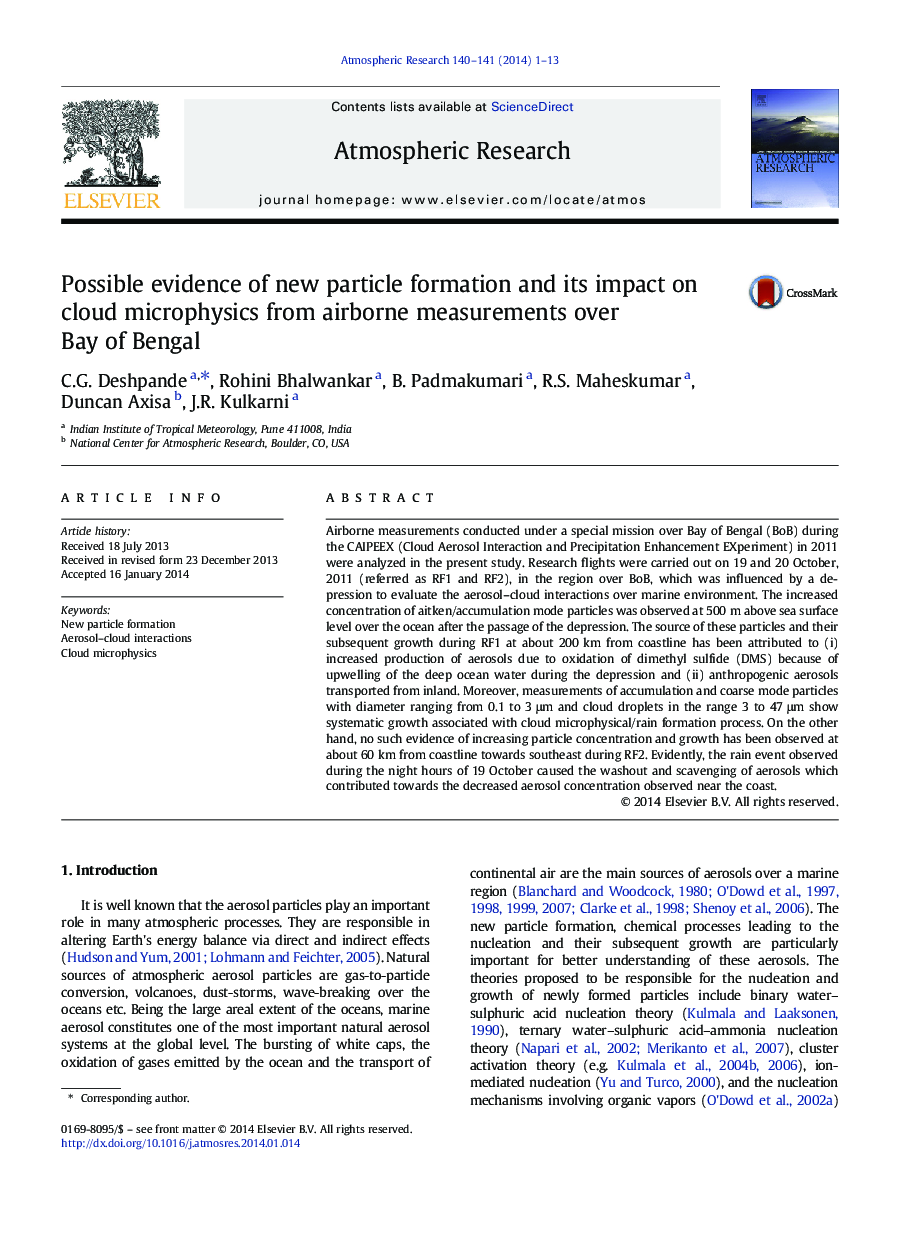| Article ID | Journal | Published Year | Pages | File Type |
|---|---|---|---|---|
| 4449878 | Atmospheric Research | 2014 | 13 Pages |
•Possible new particle formation and their subsequent growth over Bay of Bengal region•Transport of anthropogenic aerosols from land•Influence of the depression on ocean emissions and aerosol–cloud interactions•Washout mechanism due to scavenging of aerosols in rain event
Airborne measurements conducted under a special mission over Bay of Bengal (BoB) during the CAIPEEX (Cloud Aerosol Interaction and Precipitation Enhancement EXperiment) in 2011 were analyzed in the present study. Research flights were carried out on 19 and 20 October, 2011 (referred as RF1 and RF2), in the region over BoB, which was influenced by a depression to evaluate the aerosol–cloud interactions over marine environment. The increased concentration of aitken/accumulation mode particles was observed at 500 m above sea surface level over the ocean after the passage of the depression. The source of these particles and their subsequent growth during RF1 at about 200 km from coastline has been attributed to (i) increased production of aerosols due to oxidation of dimethyl sulfide (DMS) because of upwelling of the deep ocean water during the depression and (ii) anthropogenic aerosols transported from inland. Moreover, measurements of accumulation and coarse mode particles with diameter ranging from 0.1 to 3 μm and cloud droplets in the range 3 to 47 μm show systematic growth associated with cloud microphysical/rain formation process. On the other hand, no such evidence of increasing particle concentration and growth has been observed at about 60 km from coastline towards southeast during RF2. Evidently, the rain event observed during the night hours of 19 October caused the washout and scavenging of aerosols which contributed towards the decreased aerosol concentration observed near the coast.
